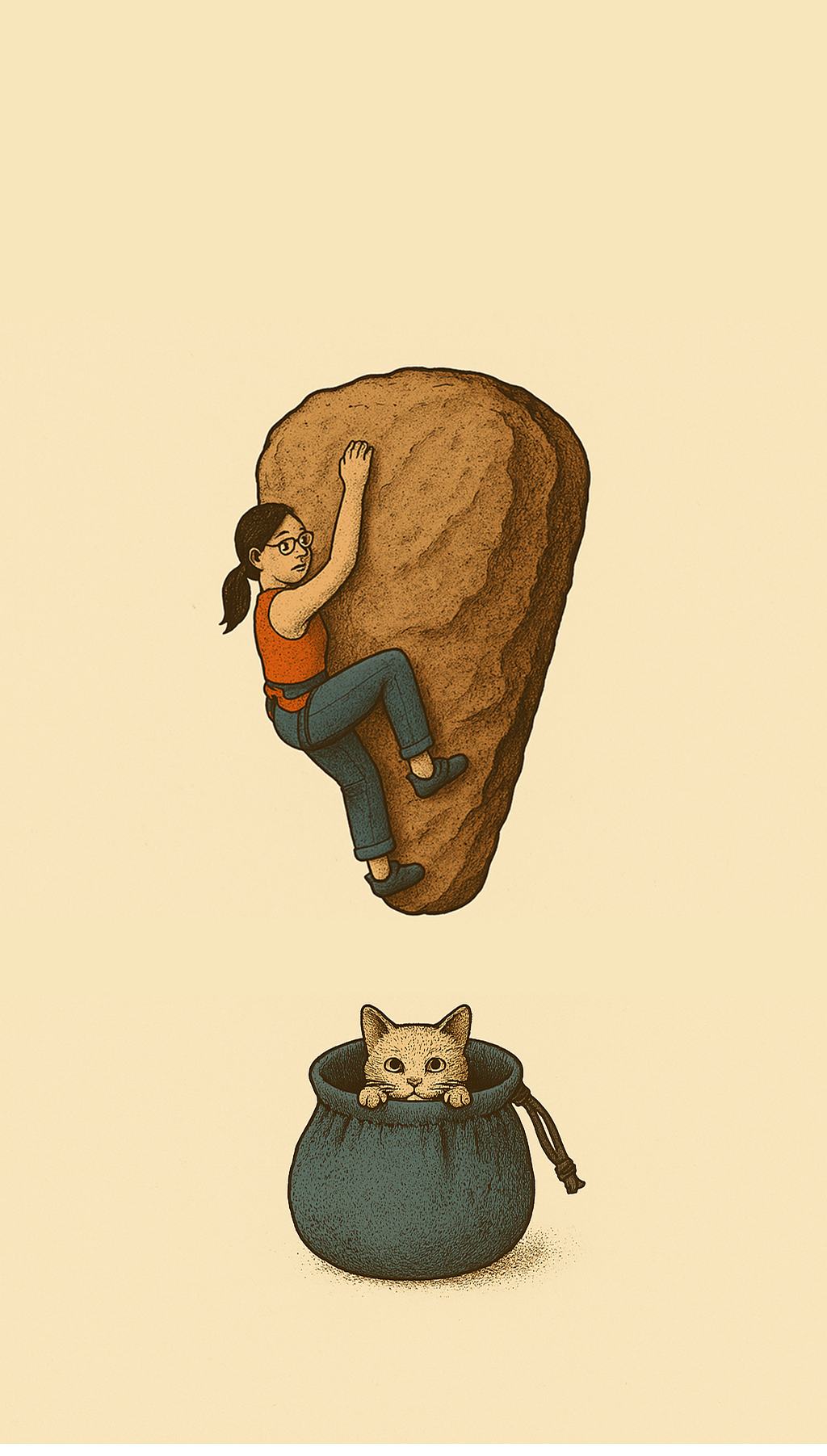“Frame of Breath”: A Spanned Moment that Teaches You About Tension
There’s a painting or a blank wall in front of you. Today, it becomes your partner.
Stand barefoot, facing it. Let your arms spread lightly outward so the backs of your hands touch the frame or wall edges. Head gently forward, resting in the space between, cushioned by a towel if you like.
Not rigid. Not slack. Just present.
This isn’t about freezing in place.
It’s about listening—to yourself, through the wall.
Step 1: Establish Contact
Stand tall, feet grounded but easy.
Place the backs of your hands softly against the frame or wall.
Rest your forehead or nose forward lightly, just enough to feel contact.
This is your point of reference. It will tell you what happens when you breathe.
Step 2: Inhale with Attention
Breathe in naturally.
Let your ribs and back expand.
Notice how the pressure changes where your hands meet the wall.
Ask yourself:
Does the pressure increase smoothly?
Is it the same on both sides?
Or does one side arrive early, harder, uneven?
Step 3: Exhale with Control
Exhale fully, without collapsing.
Feel the pressure ease, not vanish.
Stay in light, even contact.
Notice:
Does your contact drop away too quickly?
Does your forehead press or roll into the wall?
Do you shift or lose alignment?
Step 4: Repeat and Observe
Continue this cycle for several breaths.
Don’t force the breath. Let it guide the contact.
Notice subtle shifts in how your body balances and adjusts.
Purpose and Why It Matters
This drill isn’t about “holding your shape” or breathing perfectly.
It’s about noticing how your breath moves your body.
Breathing is movement.
Movement is balance.
Balance is climbing.
If you brace or hold your breath to stay still here, you’ll likely do the same on the wall.
If you can keep light, even, responsive contact while breathing, you’re learning the skill of moving without fighting yourself.
Climbing Translation
This is what smears, slabs, and volume work demand:
Staying connected without rigidity.
Letting breath inform balance shifts.
Remaining aware of subtle tension patterns that can throw you off balance or waste energy.
When you trust your breath to move you, you can trust your feet to hold you.
Optional Challenges
Try three full breath cycles without changing the pressure of your hands against the wall at all.
Practice with eyes closed for deeper internal sensing.
Slow the breath even further, noticing micro-adjustments throughout.
Closing Thought
Let this wall become a frame for awareness.
Let your breath become the teacher.
Listen to what even the lightest contact can reveal.
Climbing begins here: not with the grab or pull, but with the quiet readiness to feel and respond.
